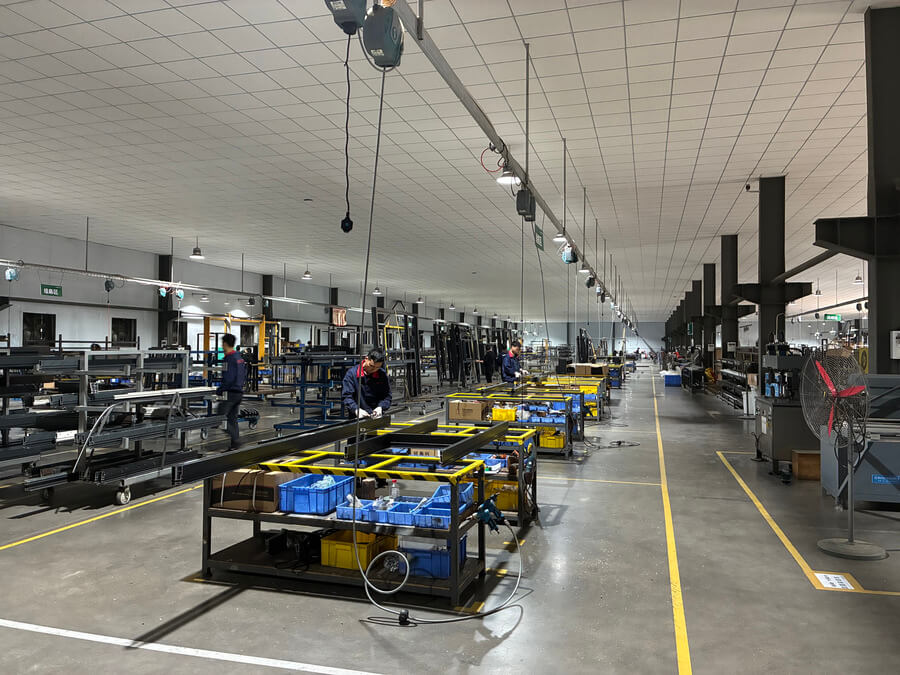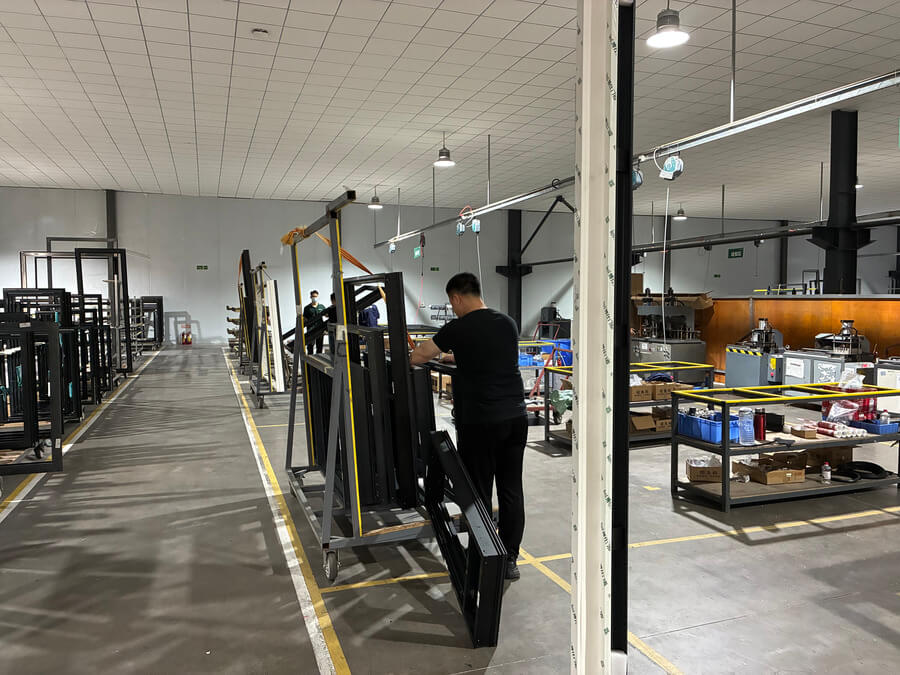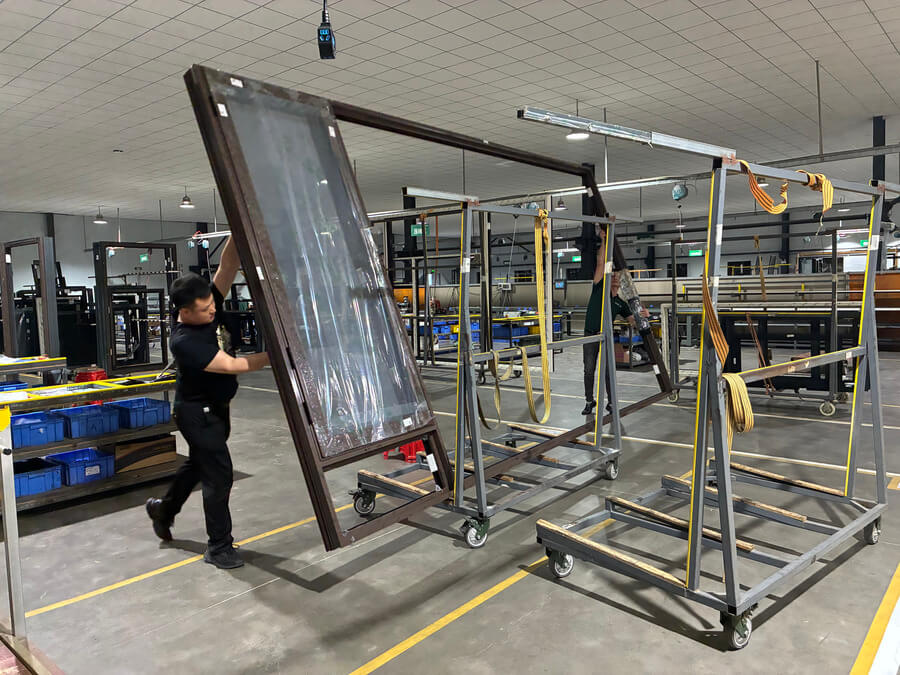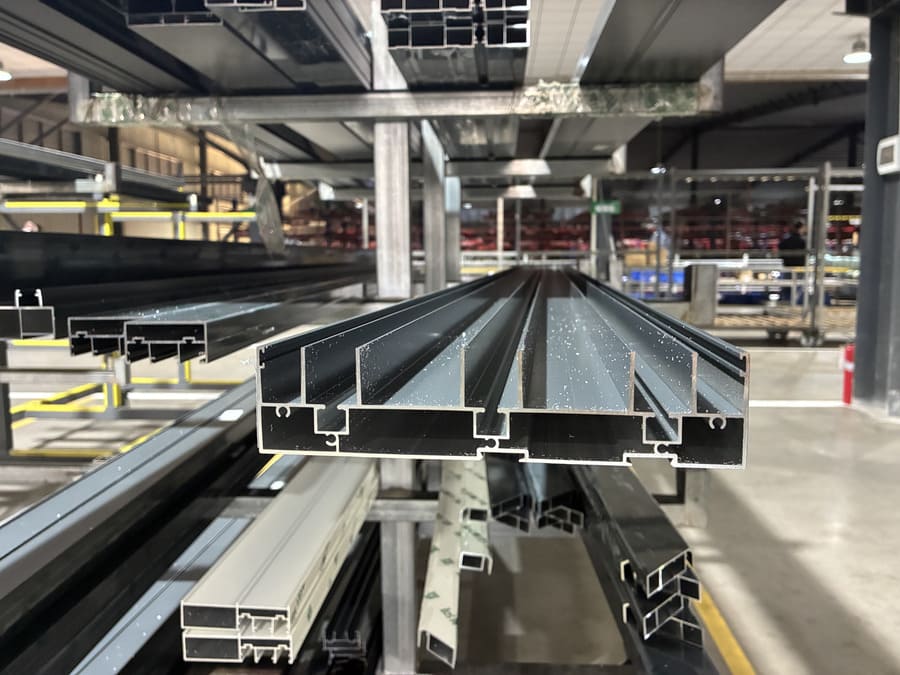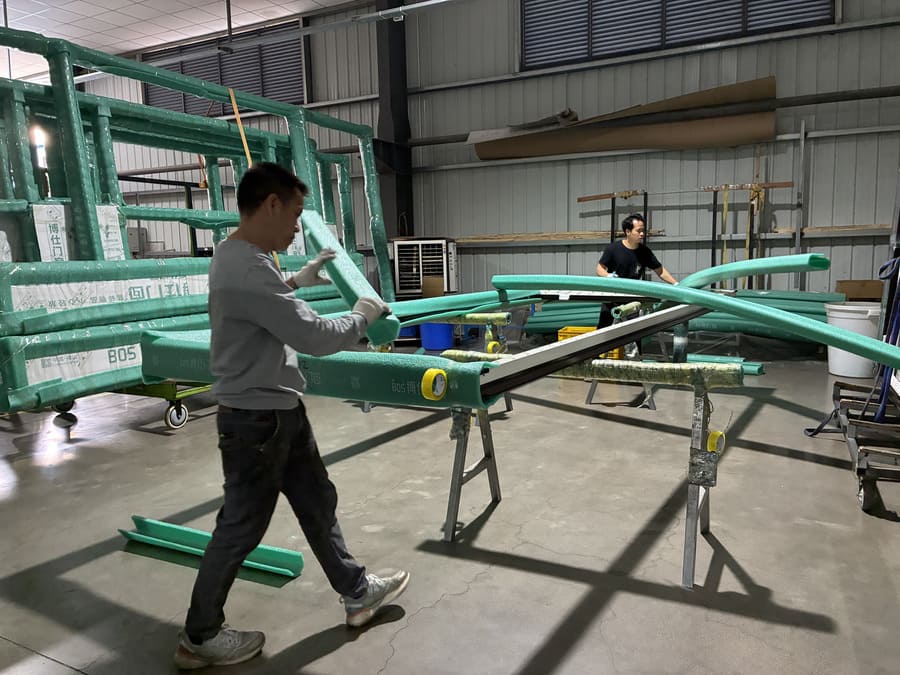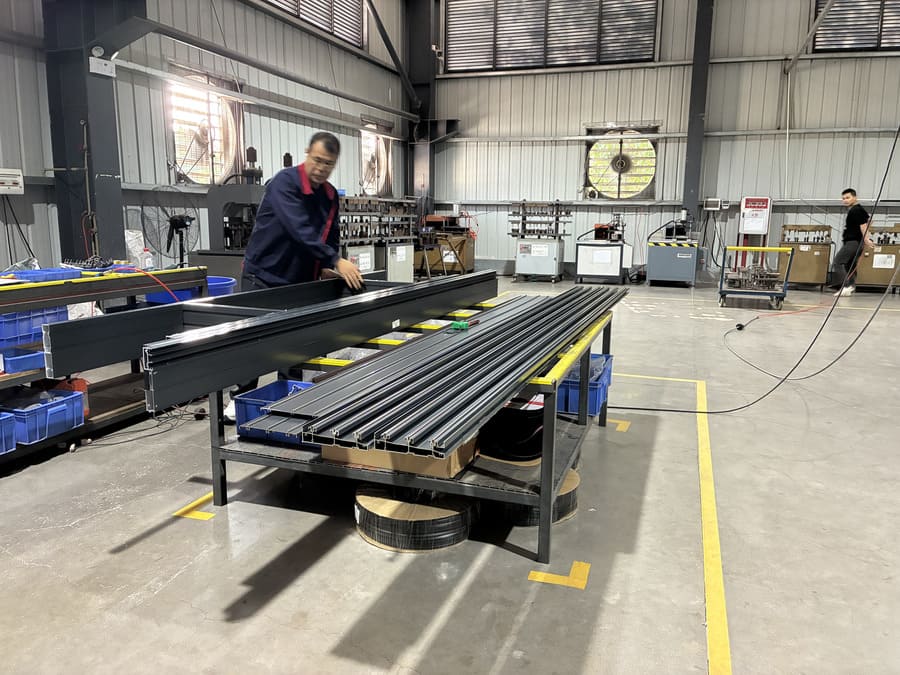Defining Floor-to-Ceiling Windows: Why Choose Expansive Glass?

Floor-to-ceiling windows are defined by their impressive height, stretching from the floor directly to the ceiling line. Often forming a significant portion, or even the entirety, of a wall, they create what’s commonly known as a window wall. These architectural statements are frequently seen in modern homes and contemporary designs, specifically crafted to maximize natural light penetration and offer unobstructed views.
The allure of floor-to-ceiling windows is strong and multifaceted. Primarily, they dramatically amplify natural light within a space. This illumination not only brightens interiors, fostering a more inviting and lively ambiance but also contributes to well-being, positively impacting mood and overall health.
Secondly, these windows effectively dissolve the boundary between indoors and outdoors. Imagine living rooms and kitchens extending visually into your garden, patio, or a captivating cityscape. This sought-after connection to nature provides a valuable sense of spaciousness and tranquility.
Furthermore, they can visually make a room feel larger. The expansive glass creates an illusion of increased space, particularly beneficial in small spaces, resulting in an open and airy feel. For those aiming to transform your home with a visually striking feature, floor-to-ceiling windows add a touch of contemporary sophistication and elegance.
Understanding Floor-to-Ceiling Windows Cost Implications

The cost of floor-to-ceiling windows varies significantly. Key factors include material, size, energy efficiency features, and installation complexity. While generally pricier than standard windows, exploring options like aluminum windows can offer value.
Material choice greatly impacts cost. Vinyl is budget-friendly, while wood and fiberglass are premium. Aluminum windows present a strong mid-high-range option, balancing cost and performance. They are durable, allow for sleek, minimal frames ideal for large glass expanses, and can be energy-efficient with thermal breaks. While top-tier materials like fiberglass offer ultimate efficiency, aluminum windows provide a cost-effective path to achieving expansive glass and modern aesthetics.
Larger panes and enhanced energy features like triple-pane glass and specialized coatings increase costs across all materials. Complex installations further elevate expenses. When budgeting for floor-to-ceiling windows, consider aluminum windows as a durable, stylish, and potentially more accessible choice. For accurate pricing and to determine if aluminum windows suit your project, consulting a window professional for a detailed quote is essential. They can help you navigate material options and find the best value for your needs.
Floor-to-Ceiling Windows or Window Walls: Is It the Right Choice?

Window walls, effectively creating entire walls of glass, offer a dramatic visual impact. Deciding whether a window wall or a floor-to-ceiling window approach is right for your home necessitates careful consideration of several aspects. While the aesthetic advantages and influx of natural light are clear, your specific needs and context are crucial.
Consider your local climate. In regions with temperature extremes, energy efficiency is paramount. While advanced energy-efficient windows with features like robust insulation, specialized coating, and triple-pane construction can mitigate heat transfer, expansive glass areas can still influence your home’s energy consumption. Selecting high-performance, energy efficient windows and ensuring professional installation are vital to home more comfortable year-round.
Boswindor Doors&Windows Solution Meet Your Needs
Durability, Low Maintenance, Lightweight, Strength, Sleek Aesthetic, Energy Efficiency, Recyclable, Resistance to Corrosion, Longevity, Customize, Security
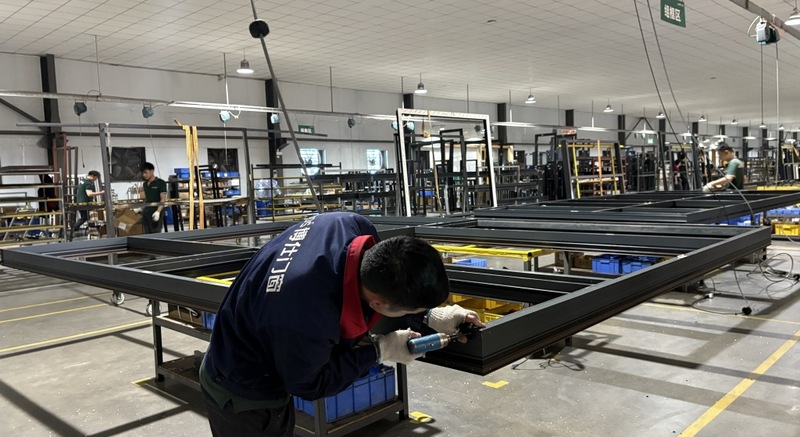

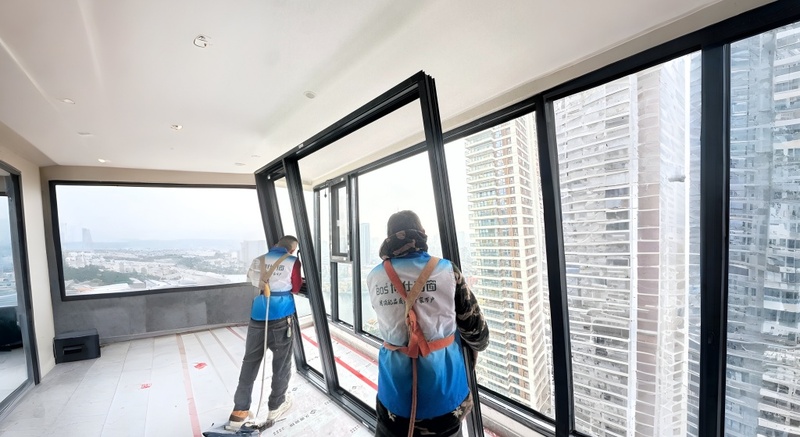



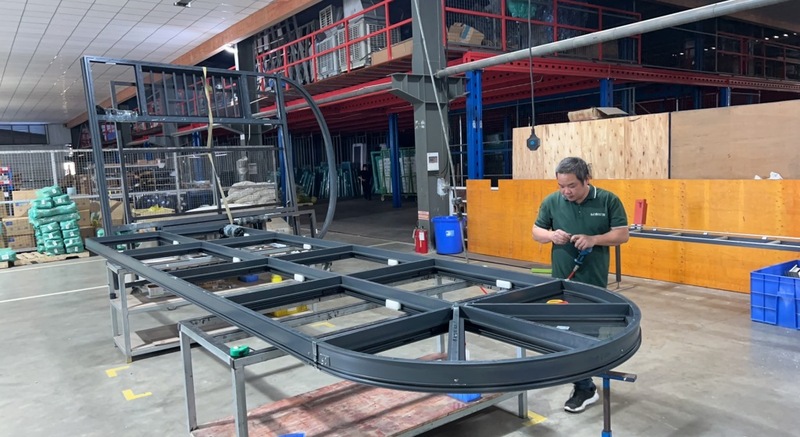


Also, assess your home’s orientation. South-facing large windows can maximize sunlight but may also lead to excessive heat gain during warmer months. Strategic placement and window treatments, like blinds or drapes, can help regulate sunlight and temperature.
Privacy is another key consideration. If your home is in a densely populated area or faces a busy street, large glass windows might compromise privacy. However, solutions like privacy glass or thoughtful landscaping can effectively address this.
Finally, reflect on your lifestyle and design preferences. Do you appreciate modern home aesthetics and prioritize expansive unobstructed views and abundant natural light? If so, floor-to-ceiling windows can be an excellent choice to incorporate them into your home. If you value maximum privacy and prefer a more traditional style, standard windows or a balanced combination of large windows and solid walls might be more suitable.
Essential Installation Considerations for Floor-to-Ceiling Windows

Prior to installing floor-to-ceiling windows, several key considerations for installing must be addressed to ensure a successful and enduring result. Careful planning and execution are essential.
Structural integrity is of utmost importance. In many homes, walls can be load-bearing. Replacing a load-bearing wall with expanses of glass necessitates expert structural engineering to maintain the building’s stability. Consulting a qualified structural engineer or experienced architect is crucial to evaluate your home’s structural framework and determine any necessary reinforcement.
Window size and glass pane weight are also critical. Large picture windows can be exceptionally heavy, requiring specialized handling and installation techniques. Ensuring window frames and the surrounding structure can support the large glass weight is crucial for safety and long-term performance. Safety glass, such as tempered or laminated glass, is strongly recommended, particularly for floor-to-ceiling windows, especially in vulnerable areas or where safety is a concern.
These glass types are designed to fracture safely, minimizing injury risks. Furthermore, consider the fit of windows within the overall design the home. Floor-to-ceiling windows are significant architectural elements, and their style and placement should harmonize with your contemporary home or traditional architectural style. Consider window frame materials, colors, and styles that will complement your home’s existing architecture and interior design.
Optimizing Natural Light with Floor-to-Ceiling Window Design

The primary benefit of floor-to-ceiling windows is their ability to maximize natural light and bring in light into your living spaces. Understanding how do floor-to-ceiling windows work in this context and how to optimize their design and placement is key to achieving the desired effect.
Strategic window placement is paramount. South-facing windows capture the most consistent daylight, ideal for maximizing natural light in common areas. East-facing windows capture morning sun, perfect for bedrooms and kitchens. West-facing windows receive afternoon sun, which can be beneficial but may also lead to heat gain.
North-facing windows provide softer, diffused light throughout the day, suitable for studios or spaces requiring consistent illumination. The type of window operation also matters.
While many floor-to-ceiling windows are fixed picture windows designed for pristine unobstructed views, integrating operable windows like casement window or awning window within the floor-to-ceiling window combination enables ventilation and fresh airflow. Consider a floor-to-ceiling window combination incorporating both fixed and operable windows to balance light, views, and ventilation.
Window coatings and glass options further optimize light transmission while managing heat and UV radiation.
Low-E coatings maximize light penetration while reducing heat gain in summer and heat loss in winter, enhancing both energy efficiency and comfort. Careful consideration of window placement, operation, and glass options allows you to fully harness the potential of floor-to-ceiling windows to fill your home with beautiful natural light.
Simplifying Floor-to-Ceiling Window Cleaning and Maintenance
The impressive scale of floor-to-ceiling windows can raise concerns about cleaning floor-to-ceiling windows. While large glass surfaces might seem challenging, with the right tools and techniques, window washing becomes manageable.
For interior cleaning floor-to-ceiling windows, standard window cleaning practices are generally sufficient. A simple solution of water and vinegar or a mild window cleaner, used with a microfiber cloth or squeegee, can effectively clean the glass. Reaching exterior surfaces, especially in multi-story homes, is often the main challenge.
For ground-level windows, you might reach the exterior with an extended squeegee or window brush. However, for upper floors or inaccessible areas, professional window cleaning services are often the safest and most efficient solution.
Professional cleaners possess the equipment and expertise to safely clean large windows and high-reach windows, ensuring streak-free results. Consider cleaning frequency.
Depending on your location and environmental factors, you might need to clean your floor-to-ceiling windows more or less often.
Homes in dusty or coastal regions may require more frequent cleaning compared to cleaner environments. Regular, even basic, cleaning of accessible interior surfaces can prevent buildup and simplify overall window washing over time. While cleaning floor-to-ceiling windows might require slightly more effort than standard windows, the breathtaking views and abundant natural light they provide are undeniably worth it.
Design Tips: Selecting Your Perfect Floor-to-Ceiling Windows

Choosing the right floor-to-ceiling windows involves blending aesthetics and function. Start by considering your home’s architectural style. For modern home designs, opt for sleek, minimalist frames in aluminum or fiberglass to enhance clean lines. Traditional homes might benefit from wood or wood-clad frames for warmth.
Frame color matters. Neutrals like white or black are versatile, while bolder colors can make a statement. Explore glass options beyond basic panes. Consider tinted glass for privacy, soundproof glass for noise reduction, or decorative glass for added visual interest. Energy-efficient coatings are crucial for comfort and cost savings.
Window treatments are essential for light control and privacy. Roller shades, sheer curtains, or automated blinds offer stylish solutions. Ensure treatments complement the large glass and overall interior design.
Ultimately, find the perfect balance between visual appeal and practical needs. Think about how the windows enhance your lifestyle and create your desired ambiance. Boswindor offers diverse options to help you achieve your vision. Explore different styles, materials, and features to select floor-to-ceiling windows that truly elevate your home. Consider your personal style and how the windows will integrate into your daily living for a truly perfect fit.
FAQs About Floor-to-Ceiling Windows
How do floor-to-ceiling windows impact home security?
Modern floor-to-ceiling windows can be very secure, often incorporating features like multi-point locking systems, reinforced frames, and impact-resistant glass to enhance security.
Are there any disadvantages to floor-to-ceiling windows?
Potential disadvantages can include higher initial cost, potential for increased heat gain or loss if not properly energy-efficient, and privacy concerns in certain locations.
Can I install floor-to-ceiling windows myself?
Due to their size, weight, and structural implications, professional installation is strongly recommended for floor-to-ceiling windows to ensure safety and proper performance.
What maintenance is required for floor-to-ceiling windows?
Maintenance primarily involves regular cleaning. Depending on the climate and location, occasional resealing or hardware adjustments may also be needed over time.
Key Takeaways: Floor-to-Ceiling Windows

- Maximize Light & Views: Floor-to-ceiling windows excel at maximizing natural light and offering expansive, unobstructed views.
- Elevate Design: They contribute a modern, sophisticated aesthetic, enhancing your home’s interior design.
- Energy Efficiency is Key: Prioritize energy-efficient options to manage energy costs and maintain comfortable indoor temperatures.
- Professional Install Recommended: Due to their complexity, professional installation is crucial for safety and optimal performance.
- Balance Aesthetics & Function: Choose windows that complement your style while meeting your functional needs for light, ventilation, and privacy.
Discover more about our window solutions and how Boswindor can help you create stunning, light-filled spaces. Explore our product catalog to see our range, learn about energy-efficient options, and find inspiration in our project gallery. Read testimonials from satisfied clients. Contact us for a free consultation to discuss your project and how Boswindor can bring your vision to life.







